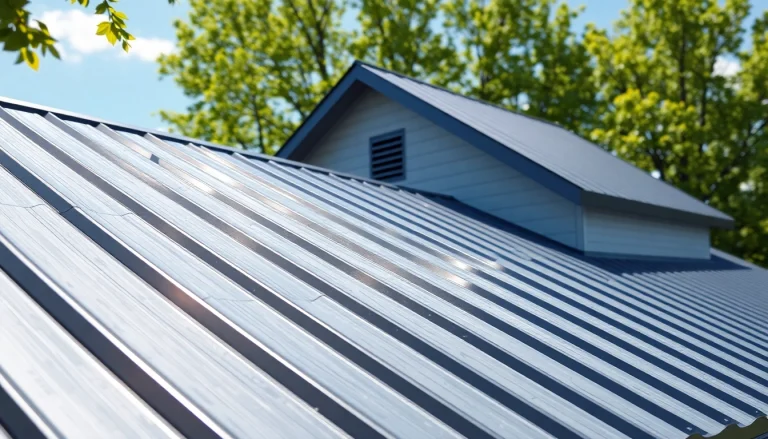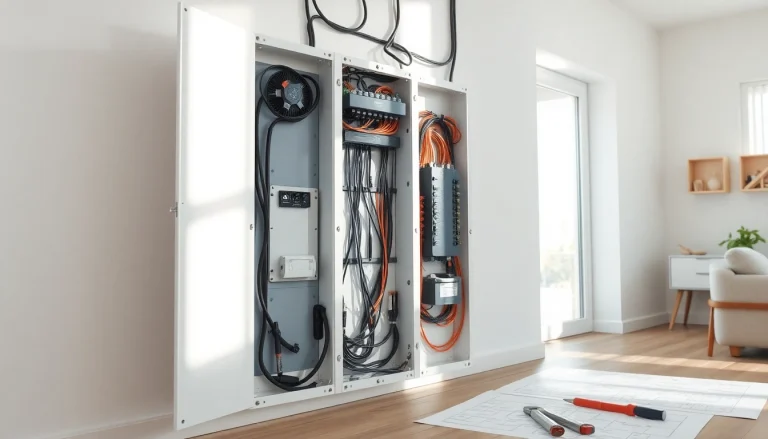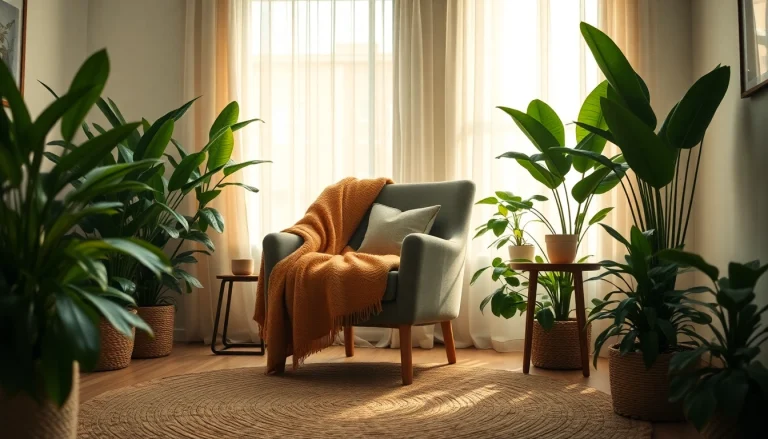Understanding Vertikale Gärten: An Overview
Vertical gardening, or vertikale Gärten, has revolutionized urban gardening by allowing people to grow plants vertically rather than horizontally. This trend is particularly beneficial in cities, where space is limited, making it an ingenious solution for maximizing green space. Let’s delve into the intricacies and benefits of vertical gardening, its design styles, and its cultural relevance.
What Are Vertikale Gärten?
Vertikale Gärten refer to methods of growing plants in a vertical space, often on walls or trellises, allowing for efficient use of limited ground area. The concept can encompass a broad spectrum, from straightforward hooks with hanging pots to sophisticated hydroponic wall systems. Patrick Blanc, a pioneer in this field, described these gardens as living works of art that contribute not only to aesthetic beauty but also to biodiversity and ecological harmony within urban settings.
Benefits of Vertical Gardening
The advantages of vertical gardening are numerous, making it a compelling choice for urban dwellers. Key benefits include:
- Space efficiency: Vertical gardens occupy little ground space while providing ample growing area.
- Improved air quality: Plants can enhance air quality by absorbing pollutants and producing oxygen.
- Noise reduction: Living walls can act as sound barriers, absorbing and deflecting noise pollution in crowded environments.
- Thermal insulation: Vertical gardens can help insulate buildings, reducing energy consumption.
- Biodiversity promotion: These gardens provide habitats for wildlife, supporting diverse ecosystems even in urban areas.
Common Designs and Styles
Vertical gardens come in various styles suited to different needs and aesthetics. Some popular designs include:
- Wall-mounted systems: These can be pre-fabricated modules or custom-built structures that can hold soil and plants.
- Green walls: A method where panels are densely filled with growing medium and plants, often featuring hydronic systems for watering.
- Trellises: Simple frameworks that support climbing plants, allowing them to ascend wall spaces.
- Hanging planters: Ideal for small spaces, these planters can be suspended from ceilings or beams.
Choosing the Right Plants for Your Vertikale Gärten
When it comes to selecting plants for vertical gardens, understanding their specific needs—including sunlight, water, and soil requirements—ensures their growth and longevity in a vertical space. Let’s explore the best options for different climates and purposes.
Best Plants for Various Climates
The climate in which you reside greatly influences your plant selection. For example:
- In temperate climates: Opt for hardy plants such as ferns, hostas, and creeping thyme, which can thrive with moderate care.
- In tropical climates: Consider utilizing colorful bromeliads, orchids, and tropical vines, which prefer warm, humid conditions.
- In arid zones: Drought-resistant plants like succulents, cacti, and certain herbs are ideal for vertical gardens as they need less water.
Understanding Plant Pairings and Companions
Companion planting is a valuable strategy in vertical gardening that maximizes growth potential. Plants like basil, which can repel pests, can be paired with tomatoes, providing mutual benefits. Understanding the needs of different plants ensures harmonious growth and health in vertical gardens.
Edible Options for Vertical Gardens
Growing edible plants in vertical gardens can enhance the sustainability aspect of urban living. Consider incorporating:
- Herbs: Basil, parsley, and mint are excellent options that thrive in vertical settings.
- Leafy greens: Spinach and lettuce can be grown in vertical planters, providing fresh produce with little maintenance.
- Fruits: Strawberries and dwarf varieties of tomatoes and peppers can flourish in vertical arrangements, yielding delicious harvests.
How to Create Your Own Vertikale Gärten
Building a vertical garden can seem daunting, but with the right approach, it can be a rewarding project that enhances your space. Below are step-by-step guides and DIY tips for creating your vertical oasis.
Step-by-Step Installation Guide
To create a vertical garden, follow these essential steps:
- Choose the right location: Find a wall or structure that receives adequate sunlight and has easy access to water.
- Select your plants: Choose plants that fit your climate and the specific conditions of the installation site.
- Prepare the structure: Build or purchase a vertical planting system, ensuring it can support the weight of the soil and plants.
- Install irrigation: Consider installing a drip irrigation system to ensure consistent watering.
- Plant your selections: Follow planting instructions carefully, ensuring each plant has enough space to grow.
- Maintain your garden: Regularly check moisture levels, manage pests, and prune as necessary.
DIY Ideas for Urban Spaces
If you have limited resources or skills, here are some practical DIY vertical garden ideas:
- Fabric pocket planters: Repurpose old fabric to create growing pockets that can hold herbs and smaller plants.
- Wood pallets: Upcycle wooden pallets into a horizontal frame filled with soil to grow climbing plants.
- Reuse plastic bottles: Cut and hang old bottles on walls, turning them into planters for various herbs and flowers.
Essential Tools and Materials
Having the right tools can make the installation process smooth and successful. Essential tools and materials for setting up a vertical garden include:
- Soil and compost
- Planters or planting pockets
- Watering system (manual or automatic)
- Plant labels
- Basic gardening tools (shovel, scissors, gloves)
Maintenance Tips for Thriving Vertikale Gärten
Once your vertical garden is established, ongoing maintenance is crucial for its health and productivity. Here are some tips for keeping your garden thriving.
Watering and Fertilization Techniques
Proper watering and fertilization are paramount for vertical gardening. Plants in vertical gardens may need more frequent watering due to their positioning but ensure that water is not pooling, which could lead to root rot. Consider using slow-release fertilizers to enrich the soil and provide nutrients over time.
Pest Management in Vertical Gardens
While vertical gardens can mitigate some pest issues due to better air circulation, they can still attract pests. Regular checks and the use of organic pest control methods, such as insecticidal soap or neem oil, can help protect your plants without harming the environment.
Seasonal Care Guidelines
Seasonal changes can affect your vertical garden’s maintenance needs:
- Spring: Fertilize and check for any early pests.
- Summer: Increase watering to compensate for heat.
- Fall: Prune back plants and prepare for winter by insulating your structures.
- Winter: For regions with frost, consider bringing more delicate plants indoors or utilizing protective coverings.
Innovative Trends in Vertikale Gärten
The field of vertical gardening is continually evolving, with innovative trends emerging that promote sustainability and creative gardening solutions. Let’s examine some of the latest advancements and ideas integrating vertical gardens into everyday life.
Technological Advances in Vertical Gardening
As technology advances, vertical gardens are becoming easier to manage and more efficient. Smart gardening systems that monitor moisture levels, nutrient content, and growth conditions can provide data-driven insights to maximize plant health. Innovations in hydroponics and aeroponics allow for soil-less growth, dramatically reducing water usage and eliminating common soil-borne diseases.
Incorporating Vertical Gardens into Architecture
Architects increasingly advocate for integrating vertical gardens into building designs. These installations not only enhance aesthetic appeal but also contribute to energy efficiency and biodiversity. Iconic buildings featuring living walls, such as the CaixaForum in Madrid and the Musee du Quai Branly in Paris, demonstrate the architectural beauty of vertical greenery.
Future of Urban Greening with Vertical Solutions
The future of urban greening is poised to see a significant rise in vertical gardens as cities strive to mitigate pollution and improve public spaces. Communities and urban planners are increasingly recognizing the psychological benefits of green spaces, pushing initiatives that promote biodiversity through vertical gardening. As we advance, vertical gardens will likely play a crucial role in reimagining urban environments by promoting greener, healthier cities.





